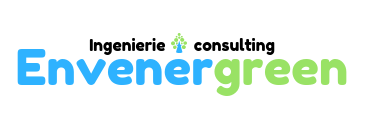Rehabilitation scenarios will then be drawn up on the basis of coherent improvement programs
tailored to the characteristics of each building, to enable the owner
to orientate his intervention in the best conditions of cost and time. These
programs will be presented in the form of "packages" of indissociable projects,
corresponding to an overall energy performance level after work. These packages will be
supplemented, where appropriate, by other recommendations for energy improvements based on
an analysis of the specific features of the building Three scenarios must be considered:
- The first corresponds to the regulatory requirements for
high-performance renovation (Arrêté du 13 juin 2008 relatif à la performance énergétique des
bâtiments existants de surface supérieur à 1 000 mètres carrés, lorsqu'ils font l'objet de
travaux de rénovation importants), i.e. 80 x (a+b) kWhEP/m².an. - The second corresponds to a high performance target of 50 x (a+b) kWhEP/m².an. -
The third will correspond to a 75% reduction in the overall energy consumption of
buildings (Factor 4 renovation).
These action programs must contain several levels of performance
energy after renovation, with the following objectives:
The regulatory BBC level for renovation
A level equivalent to 50kWhEP/m².an (for regulated uses)
A level of reduction of 75% of the building's total energy consumption ("Factor 4")
Technical obstacles to achieving the performance targets of any of these scenarios
will need to be clarified and/or justified. Energy-saving programs
will not be limited to the five conventional uses. However, a regulatory calculation will enable
the compliance of the recommendations with these five uses to be verified, in order to situate the
energy gains in relation to the initial state.
The improvement program will cover : - Corrective actions that do not require any work and concern the conditions
of use and better operation of the building (heating and
air-conditioning temperatures, night or vacancy slow-downs, modification of the
operating contract, revision of timer programming devices and times, etc.). - Technically feasible work on the building, thermal installations and
other equipment or specific uses, taking into account the interactions between
proposed improvements (for example, re-balancing and re-adjustment of
controls in the event of wall insulation work...).
Our company will explain to the client what is expected from these programs and will propose
the need: - A detailed description of the work to be carried out (quantities, type of equipment,
target performance, conditions of use, etc.). - A comparison of consumption before and after the proposed
program. - An assessment of greenhouse gas emission reductions based on the
CO2 content of the energies listed in Appendix 4 of the document. - Savings potential, expressed in kWh, for each item and overall.

